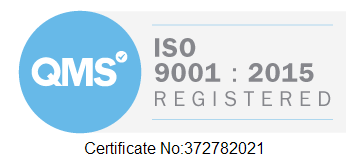In an increasingly globalised world, businesses are looking for new markets to stay competitive. Thanks to the omnipresence of the Internet, your website can now attract clients from all over the world. But how can they check your services and products when they don’t speak the same language?
Research shows that 75% of consumers prefer to buy products in their native language. Also, 60% rarely or never buy from English only websites.
Translating your website should be one of the first steps when considering expanding your business abroad. If you have international clients or you’re looking to attract more, a translated website will help you develop trust and credibility.
Here is how you can reach your target audience:
1. Know your target audience and the market
Before thinking about translating your website, you should analyse the profile of your potential clients. Is there a high demand for your product/service in that market?
One of the main things to consider is the language they might use, especially when targeting a country that has more than one language. You must know what dialect they speak, what their main problem is and how you can solve it.
2. Cultural adaptation
Translating a website is not just shifting from one language to another or the mere translation of each word. You need to adapt to the culture and context of the language through effective localisation.
While an English article may be formal, some countries will prefer a more informal approach.
You will have to change some cultural references. For instance, many countries around the world do not celebrate Christmas, and they won’t relate if you include it in your marketing strategy.
The currency, date and time format might also differ. Do your clients use the 12-hour or 24-hour-clock?
Failing to do so might result in a loss of credibility in a new market.
3. Adjust your SEO strategy
When searching for new clients, your SEO strategy is paramount. Focusing on the content but also the search menu, titles, landing pages or meta title is what is going to give your website visibility on Google with your prospects.
You need to find relevant keywords that match the specific context of the language. The words that people search in English won’t be the same as in Spanish, even though they’re looking for the same service or product. It’s important to research what they specifically look for and know their buying habits.
Google recommends adapting your URLs and the titles, which is essential to indicate the language. This will be what catches their attention first.
Your social media strategy might also need to be adapted to your foreign audience. Do they use the same platforms? Are they active? If you can reach your American clients on Facebook or Twitter, a Chinese-speaking audience will most likely use Baidu Tieba or Youku.
4. Use a native speaker for your translation
Don’t use Google Translate to reach your foreign audience. Not only will the translation lack idiomatic expressions and cultural references, but the meaning might also not even be conveyed.
Contact a trusted native speaker that’ll be able to grasp all the nuances of the language and adapt the content.
Global Translations UK offers website translations that bring results. To find out more contact us.
These tips may cost you money, but the investment will be worth it when your target audience starts purchasing your products/services from your website.





